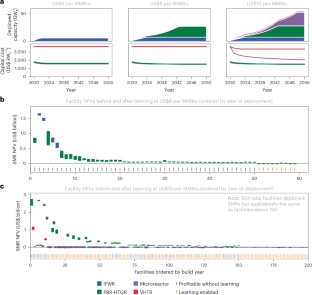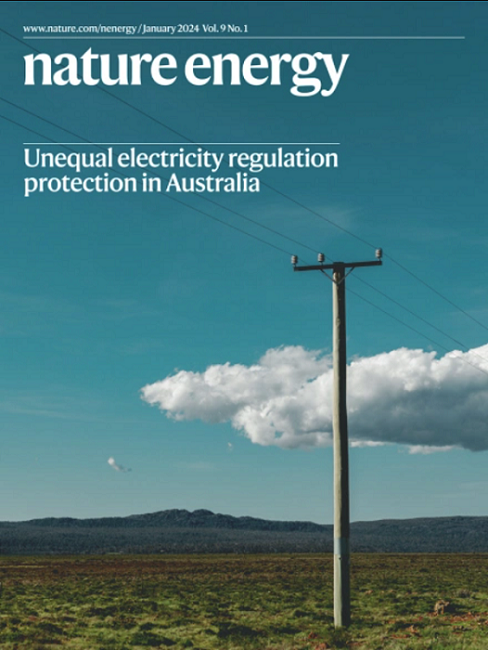政策和模块制造学习在小型模块化反应堆工业脱碳中的作用
IF 49.7
1区 材料科学
Q1 ENERGY & FUELS
引用次数: 0
摘要
小型模块化反应堆(SMR)为中高温工业过程的脱碳挑战提供了一种独特的解决方案。在此,我们根据不同的政策和工厂或现场学习条件,为四种 SMR 设计制定了在全美 925 个设施的工业热流程中替代天然气的部署路径。我们发现,在工业中广泛部署 SMR 需要天然气价格高于每百万英热单位 6 美元、低资本成本超支和/或积极的碳税。在天然气价格为每百万英国热量单位 6-10 美元的情况下,到 2050 年可经济地部署 7-55 千兆瓦热量(GWt)的 SMR,每年可减少多达 5900 万二氧化碳当量的排放。其中,2-24 千兆瓦热依靠在工厂内学习模块制造。广泛部署的潜力取决于避免早期投资成本大幅上升。直接补贴等政策杠杆无法有效激励可持续部署,但积极的碳税和投资税收抵免可为 SMR 的成功提供有效支持。本文章由计算机程序翻译,如有差异,请以英文原文为准。


The role of policy and module manufacturing learning in industrial decarbonization by small modular reactors
Small modular reactors (SMRs) offer a unique solution to the challenge of decarbonizing mid- and high-temperature industrial processes. Here we develop deployment pathways for four SMR designs displacing natural gas in industrial heat processes at 925 facilities across the United States under diverse policy and factory or onsite learning conditions. We find that widespread SMR deployment in industry requires gas prices above US$6 per metric million British thermal unit, low capital cost over-runs and/or aggressive carbon taxes. At gas prices of US$6–10 per metric million British thermal unit, 7–55 gigawatt-thermal (GWt) of SMRs could be economically deployed by 2050, reducing annual emissions by up to 59 Mt of CO2-equivalent. Of this deployment, 2–24 GWt rely on module manufacturing learning within a factory. Widespread deployment potential hinges on avoiding substantial cost escalation for early investments. Policy levers such as direct subsidies are not effective at incentivizing sustainable deployment, but aggressive carbon taxes and investment tax credits provide effective support for SMR success. Nuclear small modular reactors could help decarbonize industrial heat processes in the United States, but widespread deployment (of up to a thousand reactors) hinges on factory learning, extended tax credits and avoiding cost escalations.
求助全文
通过发布文献求助,成功后即可免费获取论文全文。
去求助
来源期刊

Nature Energy
Energy-Energy Engineering and Power Technology
CiteScore
75.10
自引率
1.10%
发文量
193
期刊介绍:
Nature Energy is a monthly, online-only journal committed to showcasing the most impactful research on energy, covering everything from its generation and distribution to the societal implications of energy technologies and policies.
With a focus on exploring all facets of the ongoing energy discourse, Nature Energy delves into topics such as energy generation, storage, distribution, management, and the societal impacts of energy technologies and policies. Emphasizing studies that push the boundaries of knowledge and contribute to the development of next-generation solutions, the journal serves as a platform for the exchange of ideas among stakeholders at the forefront of the energy sector.
Maintaining the hallmark standards of the Nature brand, Nature Energy boasts a dedicated team of professional editors, a rigorous peer-review process, meticulous copy-editing and production, rapid publication times, and editorial independence.
In addition to original research articles, Nature Energy also publishes a range of content types, including Comments, Perspectives, Reviews, News & Views, Features, and Correspondence, covering a diverse array of disciplines relevant to the field of energy.
 求助内容:
求助内容: 应助结果提醒方式:
应助结果提醒方式:


